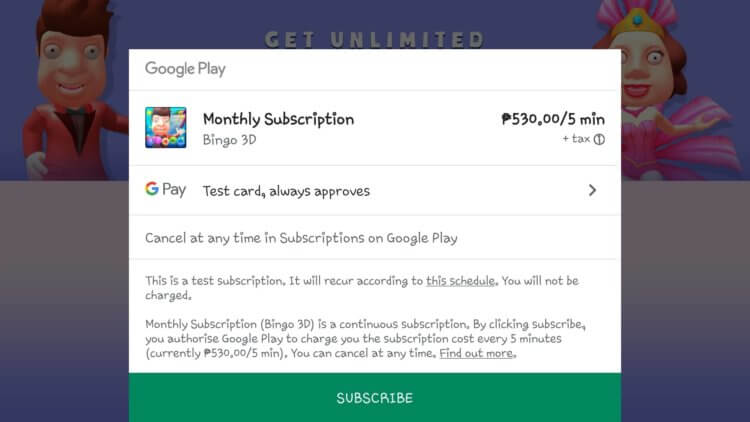I think I won't be mistaken if I say that millions of users have already become victims of subscriptions. Obviously, the reason for this sacrifice was their own inattention, but, one way or another, there are a lot of those who did not notice and subscribe or subscribe and forgot to unsubscribe, and then lost a fair amount of money. Developers also take advantage of this, shoving a subscription tool even into applications for which it is generally not accepted to pay, such as a calendar or a calculator. But since Google could not prevent developers from asking for money for their work, it began to warn users about subscribing immediately, albeit not quite as it should.

Google seems to have protected users, but it seems not
An additional button 'Try for free', which is located next to the usual 'Install' button, began to appear on the application pages in Google Play. They differ in that the first one allows you to download a version with an already issued trial subscription. And for convenience, Google put out a card with the terms of paid access right under the installation buttons, listing the main aspects of the subscription there. Here you can see its cost, validity period, as well as the privileges that the user will receive if they pay. Thus, it will be possible to decide 'on the shore' whether it is worthwhile to subscribe at all and pay the amount requested by the developer.
Trial subscription to Android

Try to guess which button you need to press in order not to lose money
The usual 'Install' button will install the free version as it did before. That is, a user receives an application without an activated trial subscription, tests it, and then decides whether to subscribe at all or not. In theory, this is a very convenient division that kills three birds with one stone:
- Users immediately get the opportunity to choose the paid or free version of the application;
- Developers get more subscriptions and fewer refund requests for mistaken subscriptions;
- Google gets more commissions from subscription sales, which range from 15 to 30%.
Another thing is that so far all this has not been implemented quite at the level that I, as a user, could count on. First, the current incarnation is not very obvious. That is, if you do not know in advance what 'Install' means, and what 'Try for free' means, you may get the wrong impression. Secondly, for now, the addition of the 'Try for free' button along with the card describing the subscription is added only at the initiative of the developer, who may refuse. Thirdly, it is not entirely clear how to 'roll back' everything back if the user changes his mind. After all, if I immediately signed up for a trial subscription, I will have to cancel it in the old way in the settings, and this is not obvious to everyone.
How to unsubscribe from Android

Subscriptions, as they were harm to inattentive users, will remain for them
Will what Google has to offer help you fight subscriptions? Perhaps, but only on condition that the company prescribes the installation conditions more clearly, will oblige all developers to add a description of the subscription and monitor their compliance with real conditions, and also add a convenient tool for canceling the subscription. Practice shows that many users simply cannot cancel their subscription, because they do not know where to find the appropriate button, and then lose money until someone tells them.
- To cancel your subscription, launch Google Play;
- Open the side menu with a swipe from left to right;
- Go to 'Subscriptions';
- Find the subscription you want to cancel and close it.
So far, it looks like Google just decided to increase its revenue a little. After all, it is logical that most users will click on the 'Try for free' button, since it already contains the word 'free' (at least I would click on it). So, if you follow the logic, you will not be charged for using the application, but in fact this is a trap, because everything is exactly the opposite. The first 3-7 days, money is really not debited, however, after their expiration, the fee for a month or even a year will be written off in one fell swoop. But Google will still receive its commission.
